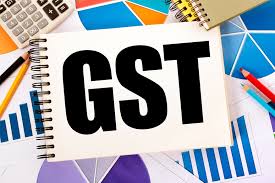Received income tax notice? No need to panic, suggest experts
has become quite vigilant about our spending (both cash and digital). Just a single glimpse of mismatch between the income tax return (ITR) filed by the taxpayer and its spending is enough for the income tax department to slap income tax notice to the earning individual. However, if we go by the tax and experts' views, there is no need to panic if the income tax department has served notice against any earning individual. They said that the income tax department gives ample time to the taxpayer to defend against the notice.
Speaking on the income tax notice SEBI registered tax and investment expert Jitendra Solanki said, "Income tax department can slap notice on both cash and digital yt. But, after receiving the income tax notice, one should first find out the reason for income tax notice. To find that reason, one needs to log in to the income tax portal and look at the form 26AS where reason for income tax notice will be mentioned."
Solanki went on to add that after finding out the reason for I-T notice, the taxpayer needs to defend himself by logging in at the income tax website and put its grievance on the home page.
On what should be the course of action if the income tax notice is against cash transaction Dr. Suresh Surana, Founder at RSM India said, "There are various restrictions or limits imposed on cash transactions which can be carried out by the taxpayers. In case of violation of any of the restrictions, the income tax department may issue a notice to the taxpayer assessee, which is generally done online. The revenue department collects data relating to transactions from the Annual Information Report (AIR) filed by various third party organisations such as mutual funds, banks, registrar of properties, etc. This data is then co-related with the income tax return and any discrepancy in both would be highlighted by way of notice which may be intimated to the taxpayer assessee by way of SMS or e-mail.
Dr. Suresh Surana went on to add that response to such notices can be in the following step by step manner:
Step 1 : Login into the Income Tax portal via https://incometaxindiaefiling.gov.in.
Step 2 : Go to the ‘e-campaign – High Value Transaction’ on the ‘Compliance Portal’ which can be accessed via the ‘My Accounts’ Tab. (also refer Page 38 onwards of the attached Compliance Portal User Guide enclosed for your reference).
Step 3 : Taxpayer needs to click on Financial Year under High Value Transactions after which an informative advisory message would be displays which is to be dealt by simply clicking on “OK" button. The taxpayer can then view information Summary.
Option A - Information is correct.
Option B – Information is not fully correct.
Option C – Information related to other Person/ Year.
Option D – Information is duplicate/ included in other displayed information.
Option E – Information is Denied.
Step 5 : Once such information is selected by the taxpayer assessee, he has to further provide details about the source of such transaction amount and/or any other details based on the option selected. For instance, if he selects Option C above, he would be required to provide details such as name of the other person, their PAN, relationship with such person, etc
.
Download our App to get knowledge updates: https://play.google.com/store/apps/details?id=com.app.gstmitraa
Join Our Telegram Channel for more updates: https://t.me/praveengst




Comments
Post a Comment